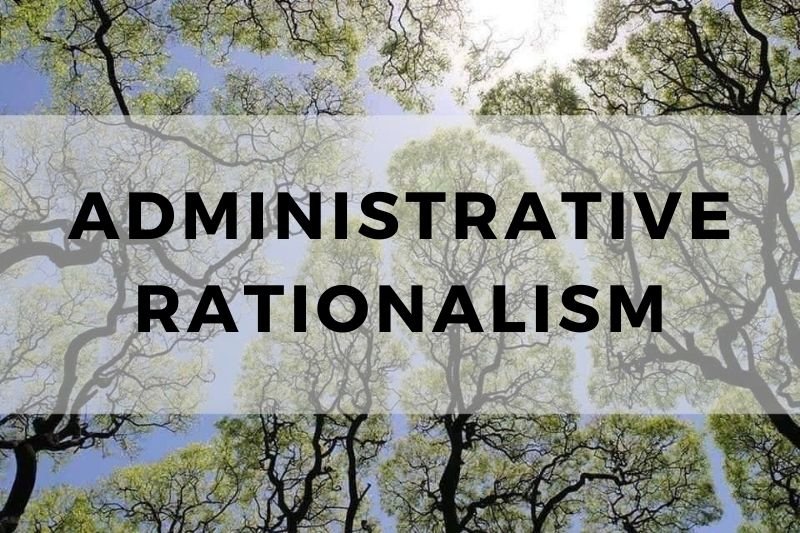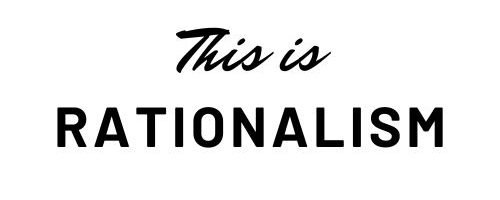
Administrative rationalism is a decision-making approach focused on expertise, structure, and efficiency. It emphasizes the role of professionals and technical knowledge in shaping policies and governance. Centralized authority and rule-based systems are key to its framework, ensuring consistency and order. The method seeks to address complex societal challenges using evidence-based strategies.
By relying on standardized processes and scientific analysis, administrative rationalism aims to create predictable and effective outcomes. However, its emphasis on top-down governance often limits public involvement, sparking debates about its democratic implications. Understanding its principles and applications is essential for evaluating its role in modern governance.
What is Administrative Rationalism?
Administrative rationalism is an approach to decision-making that emphasizes logic, structure, and efficiency. It relies on expertise and a systematic process to manage and govern. This model prioritizes evidence and analysis over intuition or emotion. The goal is to create predictable, repeatable results. Decisions are made by those with specialized knowledge, and policies are based on clear, rational principles. Administrative rationalism often involves centralized authority and rule-based governance. It seeks to maximize efficiency while minimizing risk and uncertainty. In essence, it is about using reason to achieve organized and effective governance.
Key Principles of Administrative Rationalism
#1. Expertise-Driven Decision-Making
Administrative rationalism values the knowledge of experts. Professionals with specialized skills and experience are tasked with making critical decisions. This ensures that policies are grounded in technical knowledge and informed by data. Experts reduce the risk of poor judgment, bringing a level of precision to governance. The decisions they make are considered to be more reliable and objective than those made without such expertise.
#2. Centralized Authority
Centralization is a key feature. In this model, decision-making is concentrated in a few hands, often in government agencies or top-level administrators. This structure allows for quick decision-making and consistency across a wide range of policies. Centralized authority ensures that decisions align with a unified vision, minimizing confusion and conflicting directives from various sources.
#3. Rule-Based Governance
Administrative rationalism operates on established rules and regulations. The belief is that following these rules ensures fairness, consistency, and predictability. Decision-making becomes a mechanical process where policies are based on fixed guidelines. This reduces subjectivity and arbitrariness, aiming for objective outcomes rather than decisions influenced by personal preferences or biases.
#4. Scientific and Technical Rationality
Rational decision-making in this model is deeply rooted in science and technical expertise. Decisions are made based on evidence, research, and tested theories. Scientific methods are used to analyze problems and generate solutions. This approach minimizes the influence of emotions or biases, relying instead on measurable data and verifiable facts. The focus is on data-driven decisions that produce reliable and reproducible results.
#5. Focus on Efficiency
Efficiency is central to administrative rationalism. The goal is to optimize resources, reduce waste, and ensure that systems operate as smoothly as possible. Processes are designed to be streamlined and cost-effective. By focusing on efficiency, this model aims to maximize output while minimizing unnecessary expenditures, ensuring that government operations are productive and responsive to the needs of the public.
#6. Top-Down Approach
In administrative rationalism, decisions are made from the top levels of the hierarchy. Senior administrators or government officials set policies, and lower levels are expected to follow these directives. This ensures that there is a clear, unified direction in governance. A top-down approach helps maintain order and minimizes conflicting interests or actions that may arise from decentralized decision-making.
#7. Standardization
Standardization is crucial in this approach. By implementing uniform procedures and policies, it ensures consistency in outcomes across various sectors and regions. It reduces variability and makes governance more predictable. Standardization also simplifies training and reduces errors in execution. Whether in public health, education, or infrastructure, consistent practices help maintain a steady and reliable framework for governance.
#8. Reliance on Bureaucracy
Bureaucracy supports the structure of administrative rationalism. Bureaucrats manage day-to-day activities, ensuring that policies are carried out effectively. This layer of administration helps maintain order and ensures that rules are followed. Bureaucrats are tasked with executing policies and managing public services, providing the operational backbone of government institutions.
#9. Minimized Public Participation
In the administrative rationalism model, public participation is often limited. The belief is that experts and authorities are best suited to make decisions on behalf of the public. This approach minimizes the potential for chaotic or inefficient decision-making that can arise from too much involvement from the general populace. Public opinion may be consulted, but the final decisions rest with those in power.
#10. Emphasis on Order and Control
Order and control are fundamental to the success of administrative rationalism. Governance systems are designed to prevent disorder by setting clear structures, policies, and rules. This minimizes uncertainty and ensures that systems function predictably. Control mechanisms, such as monitoring and oversight, are put in place to maintain this order and prevent deviations from the established process. By emphasizing control, the system seeks to eliminate inefficiencies and chaos from governance.
Administrative Rationalism in Practice
#1. Environmental Policy Development
In environmental policy, administrative rationalism ensures decisions are based on scientific data and expert analysis. Policies are crafted to address issues like pollution, conservation, and resource management. Experts evaluate the environmental impact and make recommendations that guide sustainable practices. Rule-based approaches help enforce regulations, ensuring compliance across regions.
#2. Urban Planning and Zoning
Urban planning relies on standardized procedures to manage growth and development. Zoning laws are designed to separate residential, commercial, and industrial areas. Planning experts use data to forecast needs and implement policies that maximize efficiency in land use. Centralized decision-making ensures consistency and order in city development.
#3. Public Health Management
Public health decisions are driven by medical research and epidemiological data. Health policies, such as vaccination programs or disease prevention strategies, are based on scientific evidence. Efficiency is a priority in allocating resources to address health crises. Bureaucratic systems ensure smooth implementation and monitoring of public health initiatives.
#4. Economic Regulation and Policy
Economic policies are shaped by expert economists and regulators. Administrative rationalism ensures that regulations are data-driven, with a focus on stabilizing markets, controlling inflation, and fostering economic growth. Centralized authorities set the rules, while expert agencies monitor compliance. This approach seeks to reduce market uncertainties and ensure long-term economic stability.
#5. Education System Standardization
Education systems often adopt standardized curricula and testing methods. This ensures that all students, regardless of location, receive a similar quality of education. Decision-makers use data to determine which educational practices are most effective. Standardization aims to provide equitable access to learning opportunities across different regions.
#6. National Security and Defense Planning
In national security, administrative rationalism supports strategic planning based on military expertise and intelligence. Defense policies are shaped by threat analysis and risk assessment. Decisions regarding military budgets, deployment, and defense strategies are driven by objective data. A top-down approach ensures that security measures are implemented consistently across the nation.
#7. Infrastructure Development Projects
Infrastructure projects are guided by rational planning and expert recommendations. Government agencies assess needs, design solutions, and allocate resources. Standardized processes are followed to ensure that projects are completed efficiently, on time, and within budget. Administrative rationalism ensures that these large-scale projects align with national priorities and goals.
Benefits of Administrative Rationalism
#1. Evidence-Based Decision-Making
Administrative rationalism prioritizes decisions based on data and research. This approach ensures that policies are grounded in facts, not guesswork or personal bias. By relying on evidence, it improves the accuracy of outcomes and helps solve problems more effectively.
#2. Efficient Resource Allocation
Efficient use of resources is a key strength. Administrative rationalism helps allocate resources where they are most needed. By following clear procedures, resources are distributed in ways that maximize impact while minimizing waste and inefficiency.
#3. Predictable and Consistent Policies
With a rule-based framework, administrative rationalism creates policies that are consistent and reliable. This predictability helps both citizens and organizations plan and operate with confidence, knowing that the rules won’t change unexpectedly.
#4. Expertise-Driven Solutions
Expertise is at the core of administrative rationalism. Professionals are entrusted with decision-making, which ensures that solutions are based on knowledge and experience. This leads to more informed, effective policies that address complex issues with greater precision.
#5. Enhanced Stability and Control
By centralizing authority and focusing on order, administrative rationalism enhances stability. The systems in place ensure that decision-making is uniform and controlled. This reduces disruptions and fosters a stable environment where policies are executed smoothly.
#6. Streamlined Implementation Processes
The structured nature of administrative rationalism makes it easier to implement policies. Clear rules and centralized control ensure that processes are well-defined, reducing delays and improving overall efficiency. This streamlined approach allows for faster action when needed.
#7. Focus on Long-Term Planning
Administrative rationalism emphasizes long-term outcomes. Decision-makers plan for the future, using data and expert analysis to forecast needs and trends. This foresight helps create policies that are sustainable and prepare societies for future challenges.
Criticisms of Administrative Rationalism
#1. Limited Public Participation
Administrative rationalism often excludes public input. Decisions are made by experts or authorities without significant involvement from the general population. This can lead to policies that may not reflect the needs or desires of the people they affect.
#2. Overreliance on Technocracy
By prioritizing expertise, administrative rationalism risks sidelining democratic processes. Technocratic decision-making can create a disconnect between the authorities and the people. This can undermine trust in the system and create policies that feel disconnected from everyday concerns.
#3. Rigidity and Lack of Flexibility
The reliance on rules and regulations can make the system rigid. This inflexibility may hinder the ability to adapt to changing circumstances or new information. It can also stifle innovation, as there is little room for alternative approaches outside the established framework.
#4. Potential for Bureaucratic Inefficiency
Bureaucratic processes, though efficient in many ways, can also lead to inefficiencies. Layers of administration can slow decision-making and increase the complexity of executing policies. Red tape can cause delays, and accountability may be lost in large, hierarchical systems.
#5. Disregard for Local and Contextual Needs
Administrative rationalism often applies uniform rules to diverse situations. This can ignore local or contextual differences that might require tailored approaches. Policies that work in one region or situation may not be suitable in another, leading to ineffective or poorly implemented solutions.
Closing Thoughts
Administrative rationalism offers a structured, evidence-based approach to governance. Its focus on expertise, efficiency, and consistency can lead to well-organized and effective policies. However, it is not without flaws. The exclusion of public participation, overreliance on experts, and inflexibility can create challenges.
For administrative rationalism to be truly effective, it must balance expert-driven decision-making with democratic engagement and adaptability. By addressing its criticisms, this approach can remain relevant and responsive to the needs of society while maintaining order and efficiency. Ultimately, the key lies in finding the right balance between rationality and flexibility.
